After weeks of planning, overthinking, and countless last-minute decisions, I finally chose to visit Taiwan for the first time.
Having lived in Japan for several years, I never felt an urgent need to go since the two places always seemed somewhat similar. But after spending some time in this vibrant country, Taiwan left a far deeper impression than I ever anticipated.
From the bustling streets beneath Taipei’s modern skyline to the serene streets of Shifen and Jiufen, each day in Taipei revealed a new perspective.
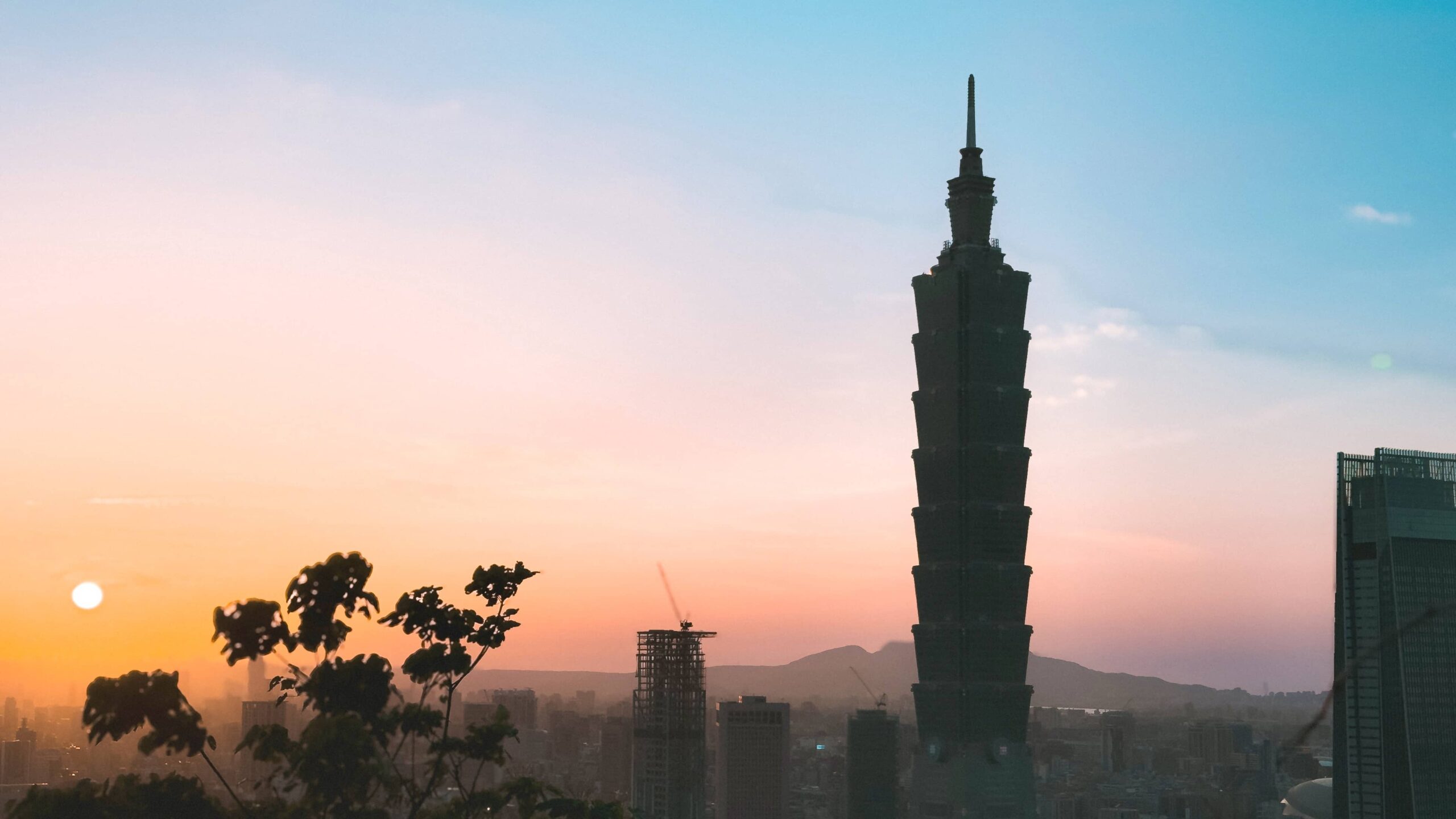
This city, roughly four times smaller than Tokyo, offered more adventure, culture, and street food than I had imagined.
Taipei is one of those places that quietly calls to curious travelers. It’s a city of contrasts: modern yet traditional, fast-paced yet laid-back, buzzing with creativity while deeply rooted in history.
As an active traveler, I always knew I’d make my way here eventually. So if you’re planning a trip to Taipei, here’s a full breakdown of how I spent my whirlwind four-day journey.
Disclaimer
All the images in this post are original photographs taken by me; none were sourced elsewhere. Aside from the cover image above, they’re completely unedited because I want to present them as authentically as possible, staying true to the moments they capture.
If you’re curious to see the edited versions, feel free to visit my photos page.
Day 1: Taipei Skyscrapers & Night Markets
After landing at Taiwan Taoyuan International Airport in the early afternoon, I headed straight for the Taoyuan Airport MRT, a convenient line that connects directly to central Taipei.
You can buy a one-way ticket at the machines or service counter, but I highly recommend picking up a Taiwan EasyCard instead. It works across the MRT, buses, and most forms of public transportation; you can even recharge it at any convenience store.
Once I reached the heart of Taipei, I checked into Guide Hotel Taipei Bade in the Songshan District, where I’d be staying for the next two nights. After a quick rest and some unpacking, I still wanted to make the most of the remaining daylight.

Taipei 101
I decided to first head to the city’s most iconic landmark, Taipei 101, located a bit south of the hotel and towards the Xinyi District. This architectural marvel rises 1,664 feet into the sky and once held the title of the world’s tallest building.
Its design blends modern engineering with traditional symbolism. The tower’s bamboo-like structure and use of the lucky number eight are deeply rooted in Taiwanese culture.
I then made my way up to the Observatory on the 89th floor, which offers a breathtaking 360° view of the sprawling city below. Even the elevator ride is a thrill, as it’s one of the fastest in the world.
Songren Road
A short walk and coffee break later, I found myself at the Songren Road Photo Spot, a now-viral street right outside this well-known izakaya restaurant, where Taipei 101 is perfectly framed between rows of residential buildings.
It’s a popular spot, so expect to wait your turn for that signature shot. You can also try visiting this alley during the day and at night, as the change in lighting creates an entirely different photo vibe.
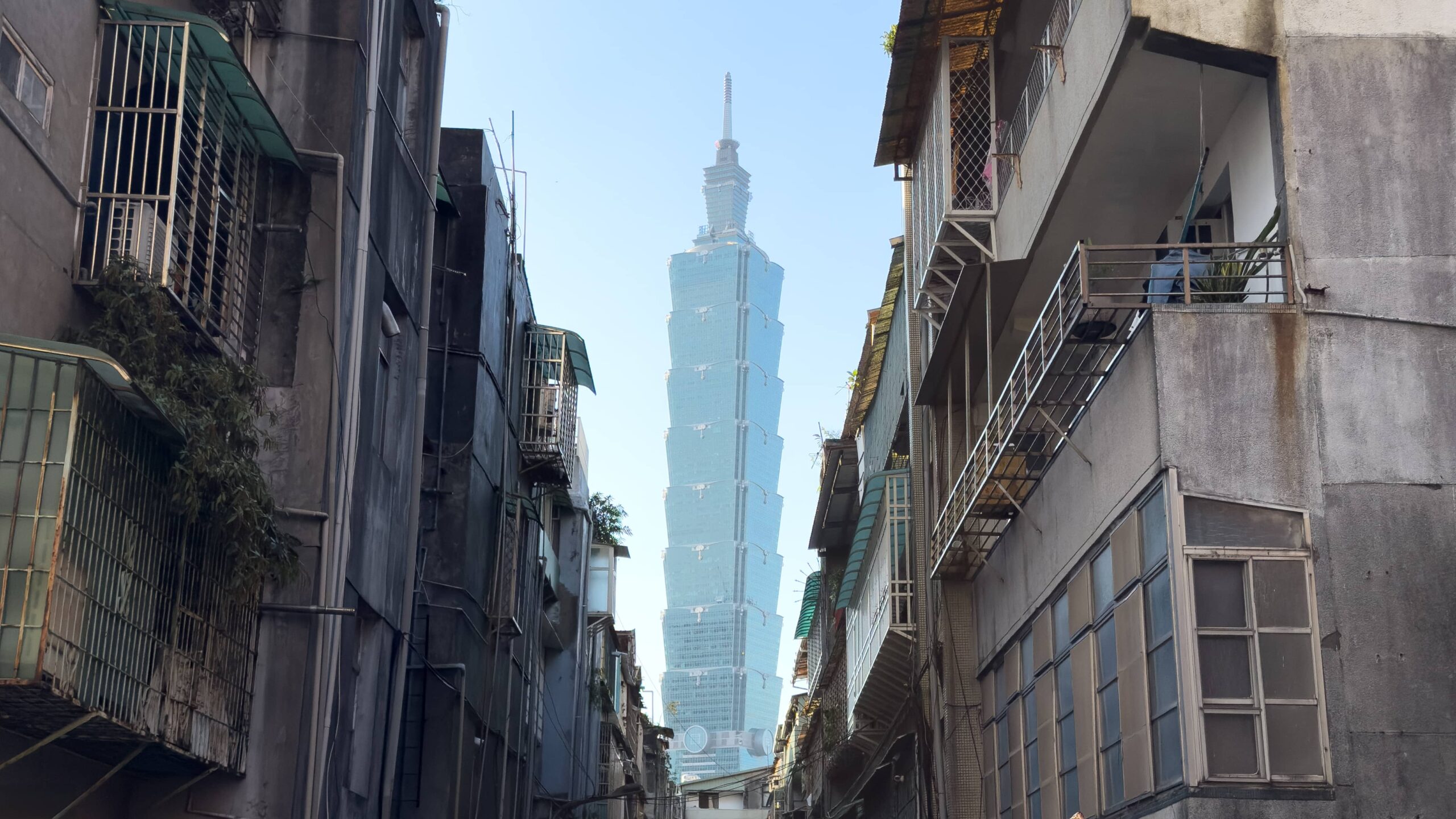
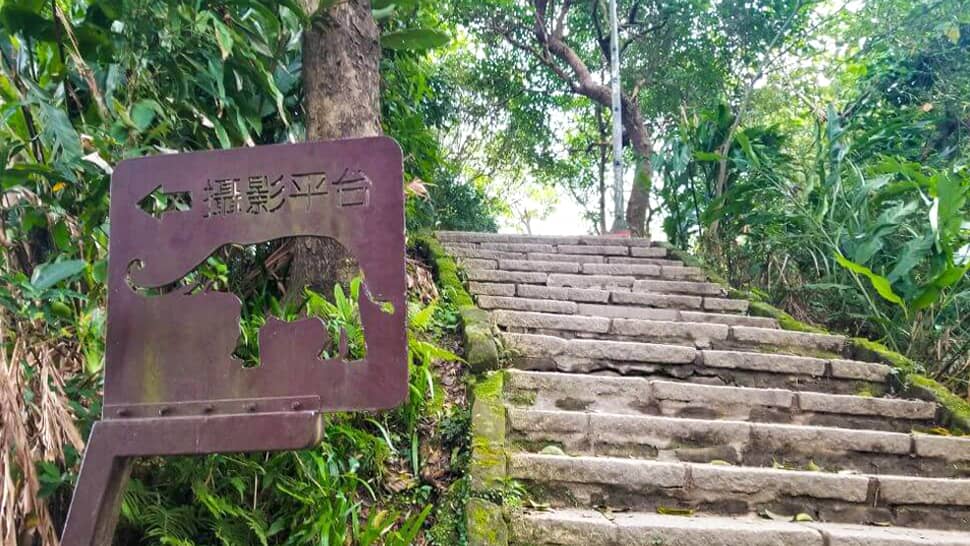
Elephant Mountain
Despite an already full afternoon, the real highlight of the day was my sunset hike up Elephant Mountain, also known as Xiangshan. It’s about a 20-minute walk from Taipei 101 and just around the corner from the Songren Road photo spot.
The hike itself was short but steep, with seemingly endless stairs, but the panoramic view of the Taipei skyline glowing in golden hour light is simply unforgettable. In case you missed it, the cover image for this article was taken here.
Just a tip, the main viewing platform gets crowded, so I veered slightly off-trail and climbed one of the nearby boulders for a clearer view and better photos.
If you’re up for a little side quest and have good shoes (plus a water bottle), this is a great way to avoid the crowds and soak in the moment.
Raohe Street Night Market
As night fell, I pushed myself to make one last stop at the Raohe Street Night Market, one of Taipei’s oldest and most iconic markets.
I walked the entire length first to get a feel for the vibe before deciding on dinner, but to be honest, the food options didn’t really impress me as they looked greasy and heavy overall.
Since I had a packed itinerary ahead, I didn’t want to risk any stomach issues, so I played it safe with a microwaveable noodle bowl and hot tea from a nearby 7-Eleven, a convenience store in Taiwan that is well-stocked and open 24 hours a day.
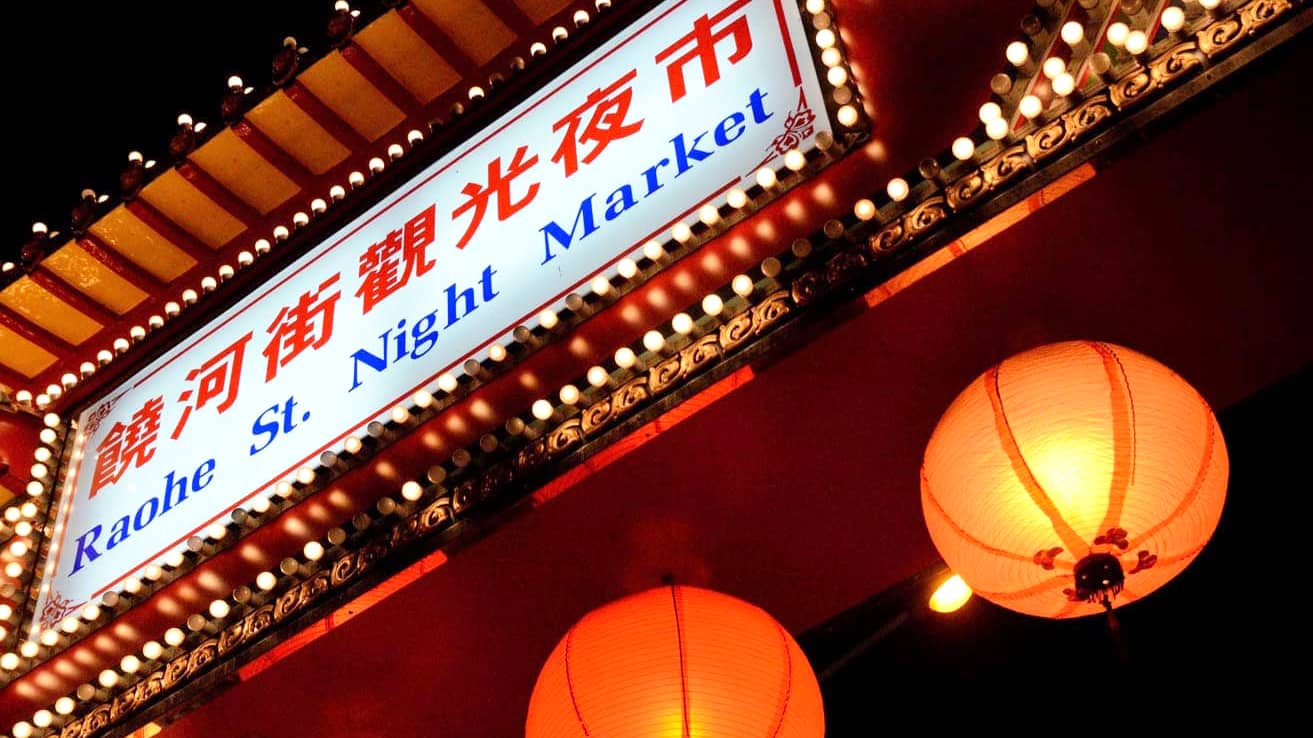
That said, Raohe Night Market was still worth visiting. The buzzing energy, sizzling street food, glowing lanterns, and mix of locals and tourists made it a fun cultural experience. Even if you don’t eat much, the atmosphere alone is worth a walk-through.
Back at the hotel, a long, much-needed shower helped me reset. I spent a few minutes editing photos from the day and then fell asleep early, knowing tomorrow would be another action-packed adventure.
Day 2: Shifen, Jiufen & Coastal Adventures
With the day already planned out, an early start was essential. After a quick rinse, some morning coffee, and a light breakfast, I left the hotel and walked to the nearest bus stop to catch a ride toward Keelung, a port city just about an hour from Taipei.
Honestly, this stretch of the trip was one of the main reasons I wanted to visit Taipei in the first place. I was especially excited to explore the northeast coast, known for its scenic views and laid-back vibe.
The bus ride was smooth and easy to navigate using Google Maps or the Bus+ Taiwan app, which I highly recommend for tracking public transportation across the country.

Zhengbin Port Color Houses
My first stop was the Zhengbin Port Color Houses in Keelung’s Zhongzheng District. These vibrant, rainbow-painted buildings line the harbor and are just as photogenic in person as they are online.
Once a dull fishing port, the area has been transformed into a colorful waterfront full of charm and is absolutely worth a visit for the cheerful atmosphere alone.
Shifen Old Street
From Keelung, I hopped on a small local train to Shifen Old Street, about an hour away. Tucked into the mountains of Pingxi District, this historic street is built around active train tracks and flanked by snack stalls and souvenir shops.
Shifen is best known for its sky lanterns, also called Pingxi lanterns, which visitors decorate with a wish, such as love, health, or prosperity, before releasing them into the sky, making it easy to see why the tradition draws so many travelers.
I didn’t launch one myself (the crowds were a bit intense), but I really enjoyed watching others and photographing their lanterns as they floated into the mountains.
If you’re wondering about cost, lanterns typically range from NT$150–200 (about $5–6 USD), depending on how many colors you choose.
Also, don’t forget to check out the nearby Shifen Waterfall, often called “Taiwan’s Niagara Falls” (though much smaller). It’s about a 15-minute walk from the main station and definitely worth the detour if you have time.
For a more in-depth look at Shifen, I recommend checking out this article.
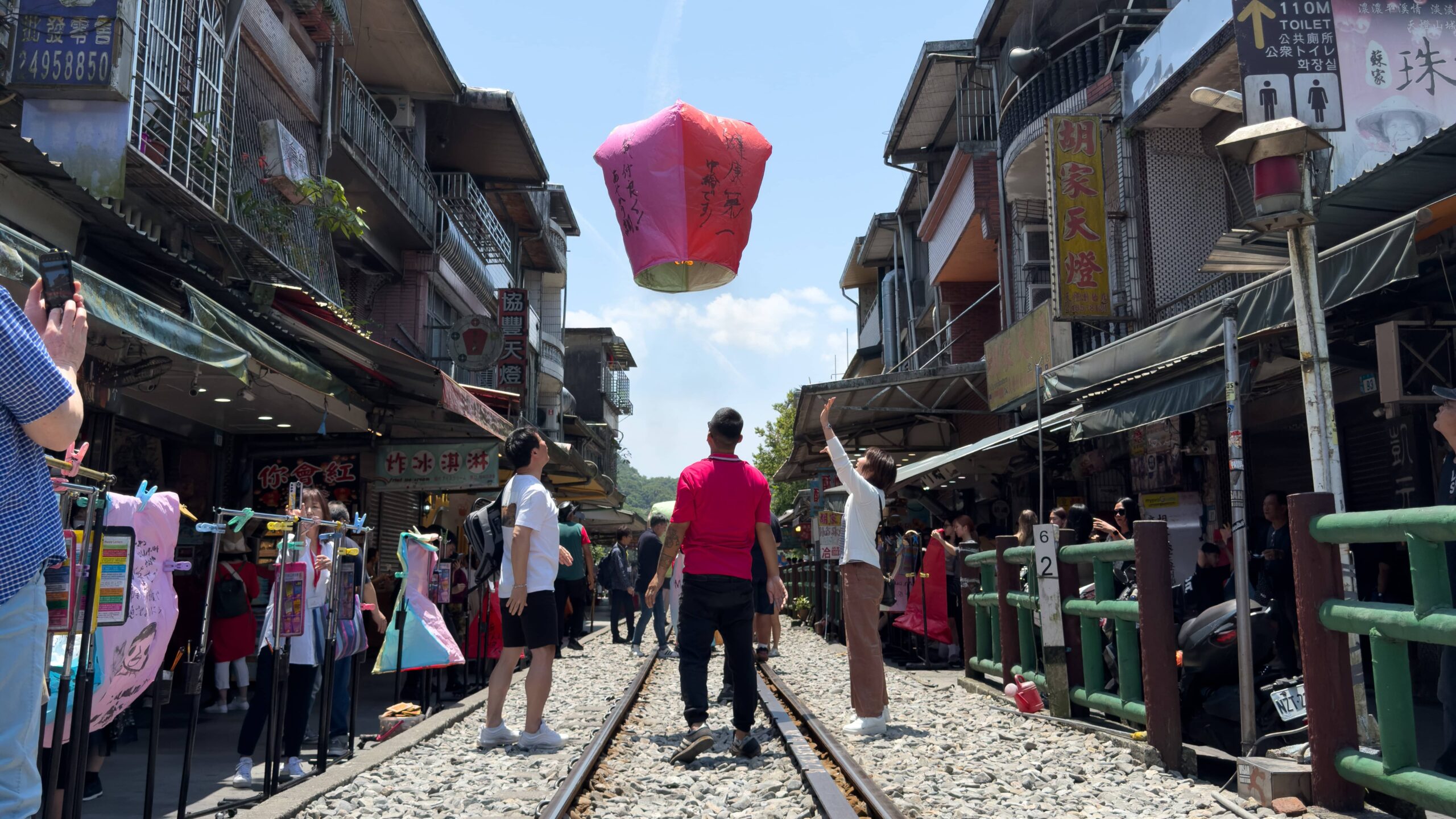
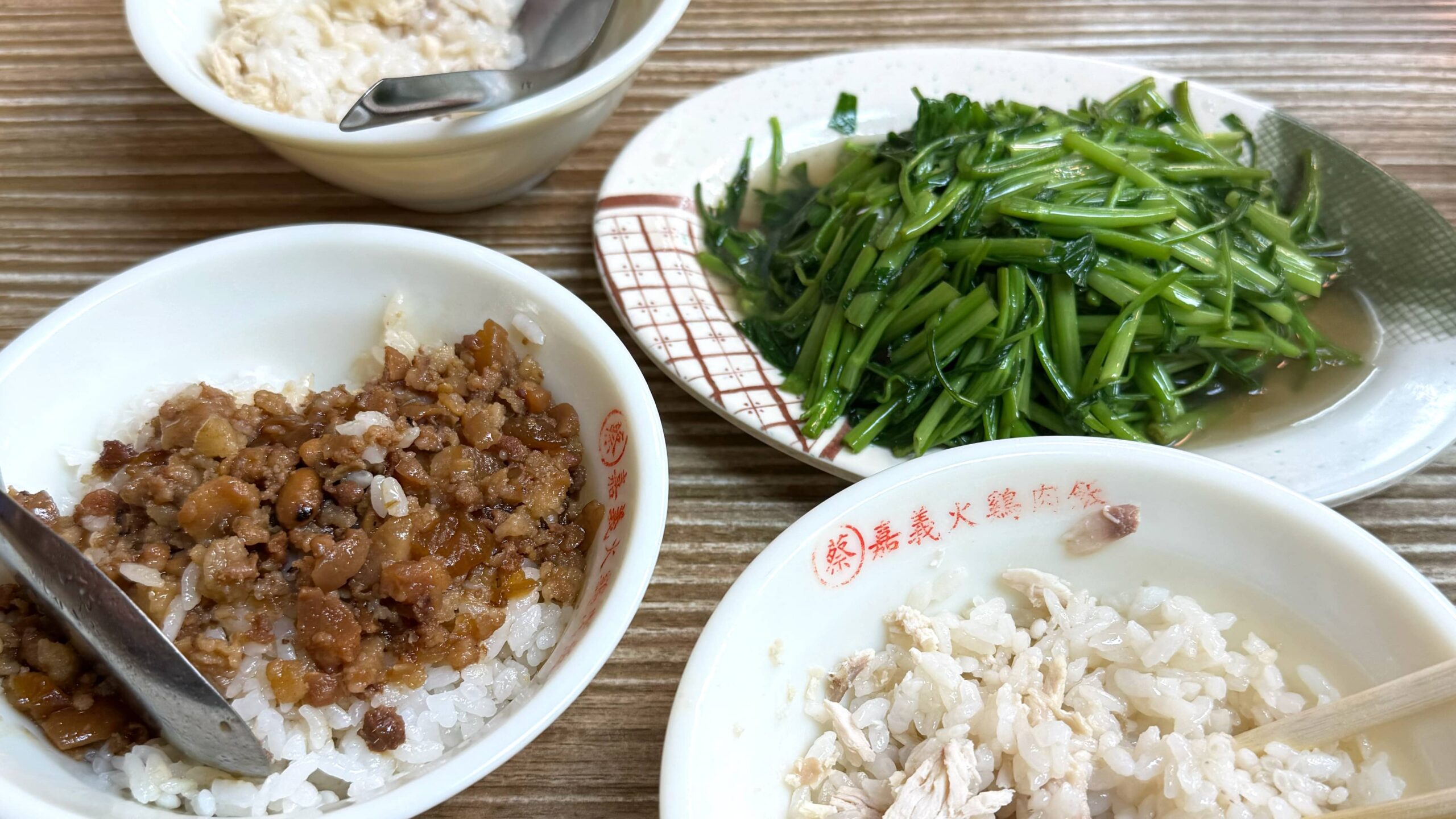
Jiufen Old Street
In the mid-afternoon, I began making my way toward Jiufen Old Street, the destination I was most looking forward to that day.
While it’s possible to get there by bus, I (like many travelers) opted for a taxi instead, since public transit in the mountains is slower and more complicated than in central Taipei.
Jiufen, placed in the heart of the Ruifang District, is a former gold-mining town perched on steep hillsides, with narrow alleyways packed with teahouses, art vendors, and street food stalls.
With so many winding streets and hidden corners, it’s easy to get lost in the best way, spending hours wandering and discovering something new at every turn.
The architecture and atmosphere are also said to have inspired Spirited Away, a popular film by Studio Ghibli. It’s easy to see why between, the lantern-lit stairways and breathtaking ocean views, the whole place feels surreal.
If you plan to visit, I’d recommend arriving in the late afternoon so you can enjoy both the daytime charm and the evening glow as the lanterns light up and the crowds start to thin.
Be sure to try some local snacks, like taro balls, fish balls, or a hot cup of traditional tea, while watching the sky darken over the hills and sea.
Feel free to check out this article on Jiufen if you’re interested to learn more.
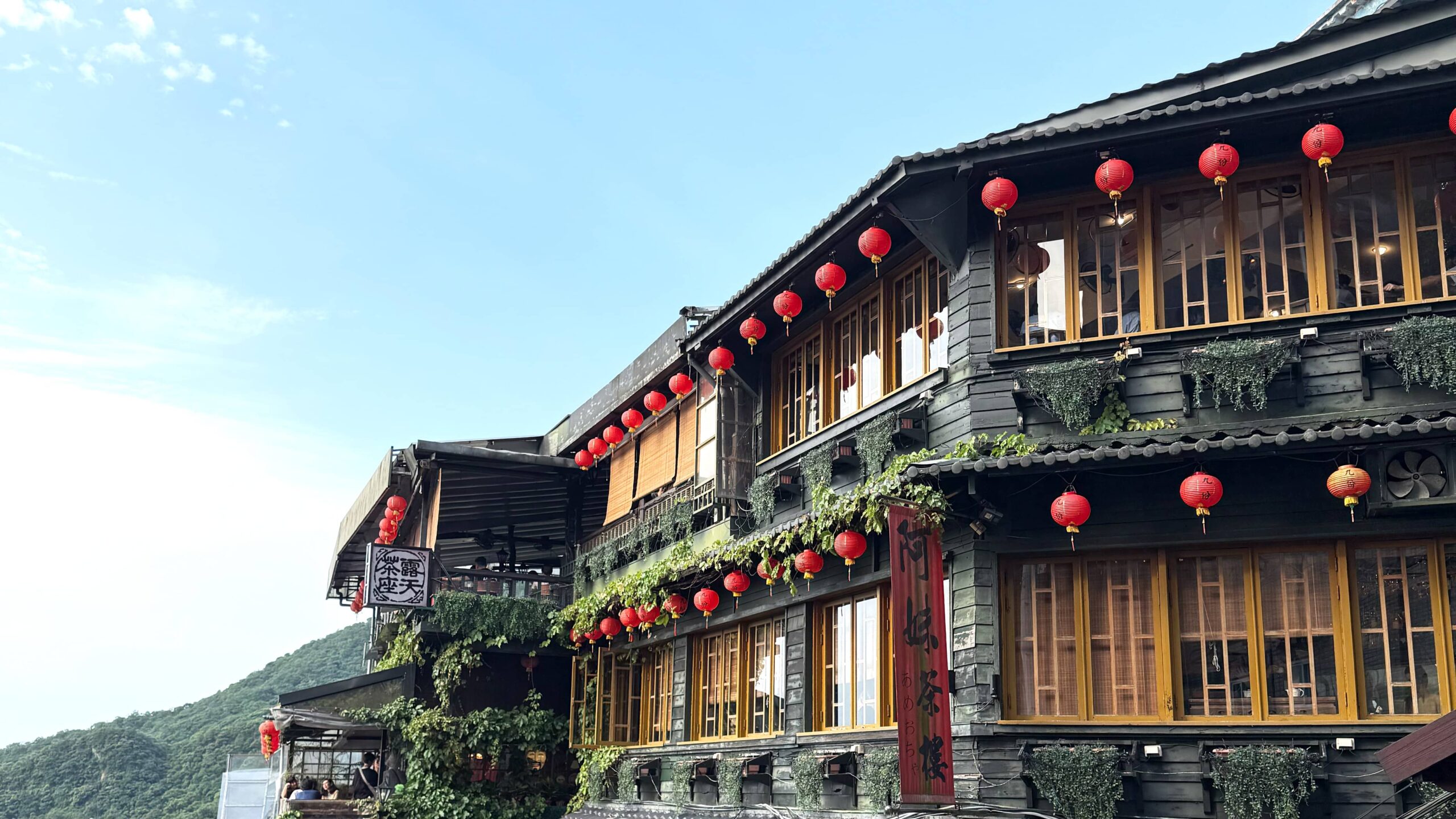
Traveling between all these northern spots is pretty straightforward by bus and train. When in doubt, just follow the crowds of tourists.
Honestly, I wasn’t part of any tour group, but I kept bumping into the same people throughout the day. It was a bit annoying as a solo traveler, but that’s just part of visiting popular spots.
By dinnertime, I caught the last bus back to Taipei; definitely check the schedule ahead of time, since it can vary between weekdays, weekends, and holidays.
A few hours later, I grabbed some snacks from a nearby convenience store and, once again, found myself going to bed earlier than planned and gearing up for the next day.
Day 3: Taipei’s Hidden Gems & Local Friends
As an active planner, you can probably guess that today was jam-packed with activities, as it was all about diving deeper into Taipei’s cultural heart and catching up with some local friends.
After checking out of my hotel, I made my way to Taipei Main Station, about a 20-minute train ride away, to store my luggage in a coin locker.
Since most hotels don’t allow check-in until late afternoon, these lockers are a lifesaver if you want to explore the city without dragging your bags around.
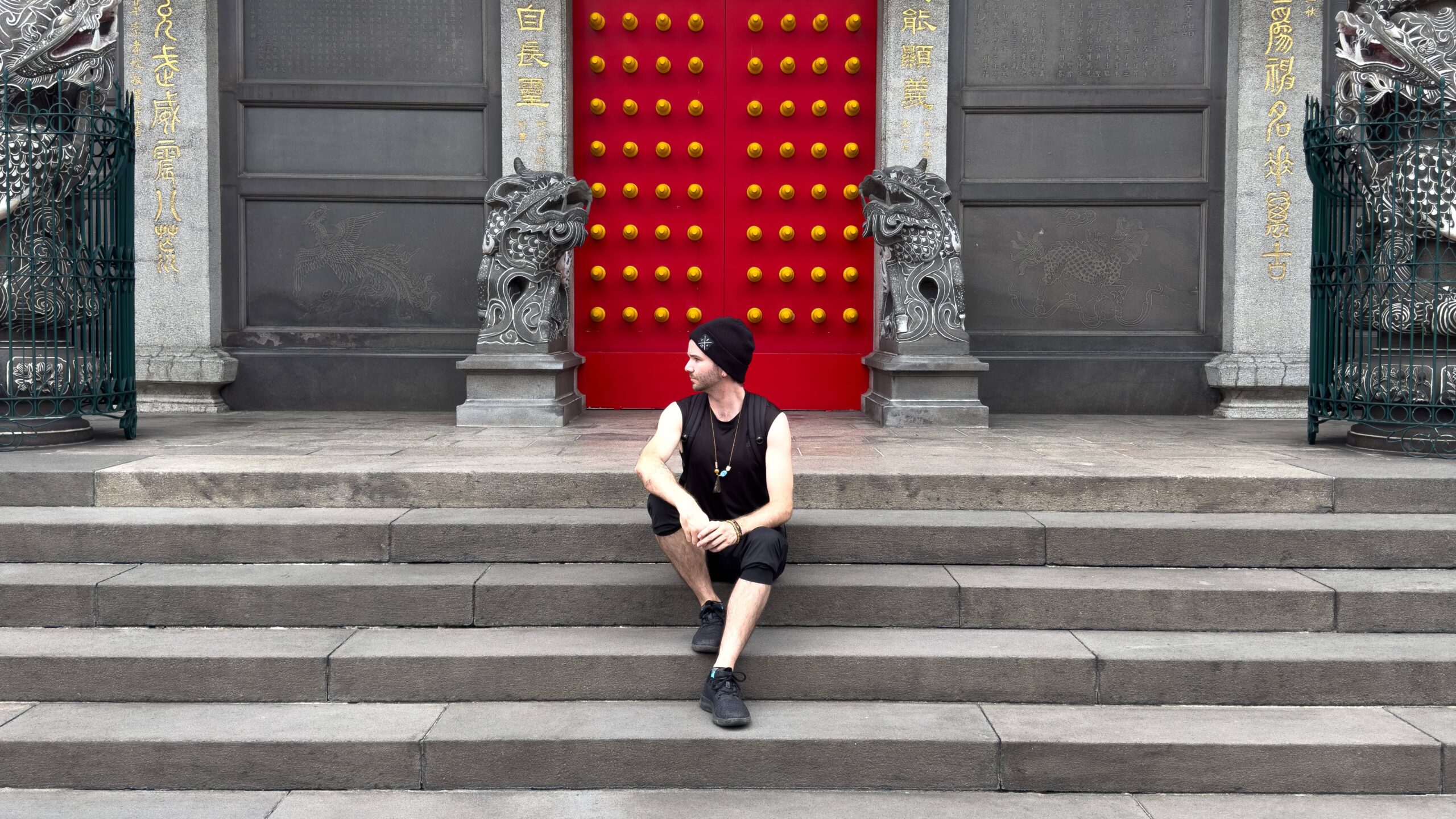
Xingtian Temple
My first stop was Xingtian Temple, also known as Hsing Tian Kong, a peaceful spot where locals come to pray for good fortune in business. The architecture was beautiful, though smaller than I expected, since it only took about ten minutes to walk around.
Still, this temple, placed in the Zhongshan District, has incredible energy, and watching worshippers perform their morning rituals gave me a meaningful glimpse into Taiwan’s spiritual traditions.
Huashan 1914 Creative Park
After snapping a few photos and chatting with locals, I headed to Huashan 1914 Creative Park, a former wine factory turned vibrant art space, filled with galleries, pop-up shops, murals, and cafés.
As someone with a background in design, I was drawn to how the historic architecture blended seamlessly with modern creativity. I could’ve spent hours here, but with a packed schedule, I wandered through a few exhibitions and artisan stalls before moving on.
Chiang Kai-Shek Memorial Hall
About a 30-minute walk later, I arrived at the Chiang Kai-Shek Memorial Hall, a grand, photogenic monument surrounded by gardens and traditional Chinese architecture.
My first impression was surprise at its sheer scale; the complex spans an entire city block, with towering gates and symmetrical gardens anchoring every corner.
Luckily, the cloudy weather worked in my favor, keeping crowds light and making it easier to explore and take photos. If you’re ever in Taipei, this iconic blue-and-white landmark is definitely worth a visit for at least an hour or two.
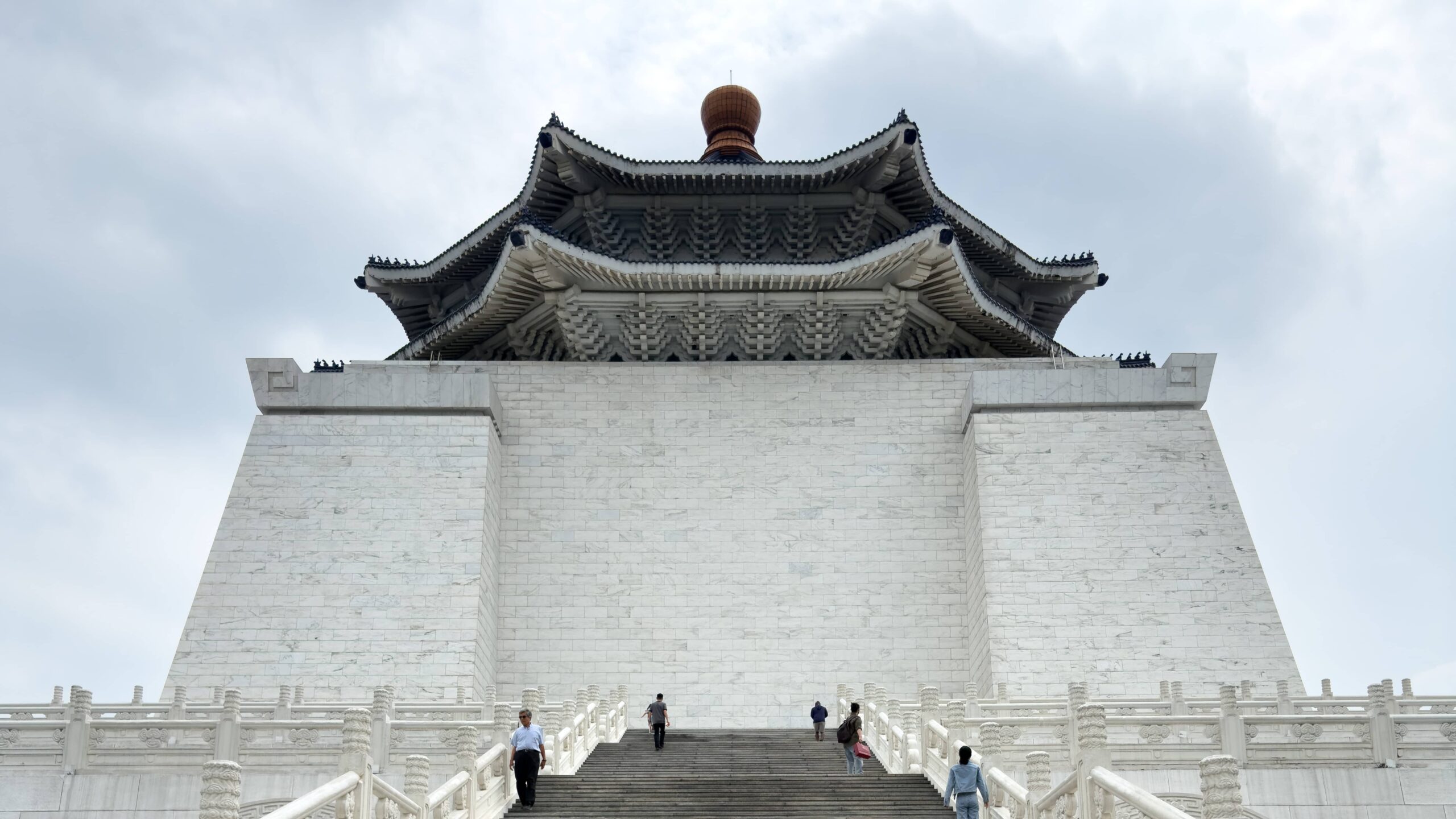
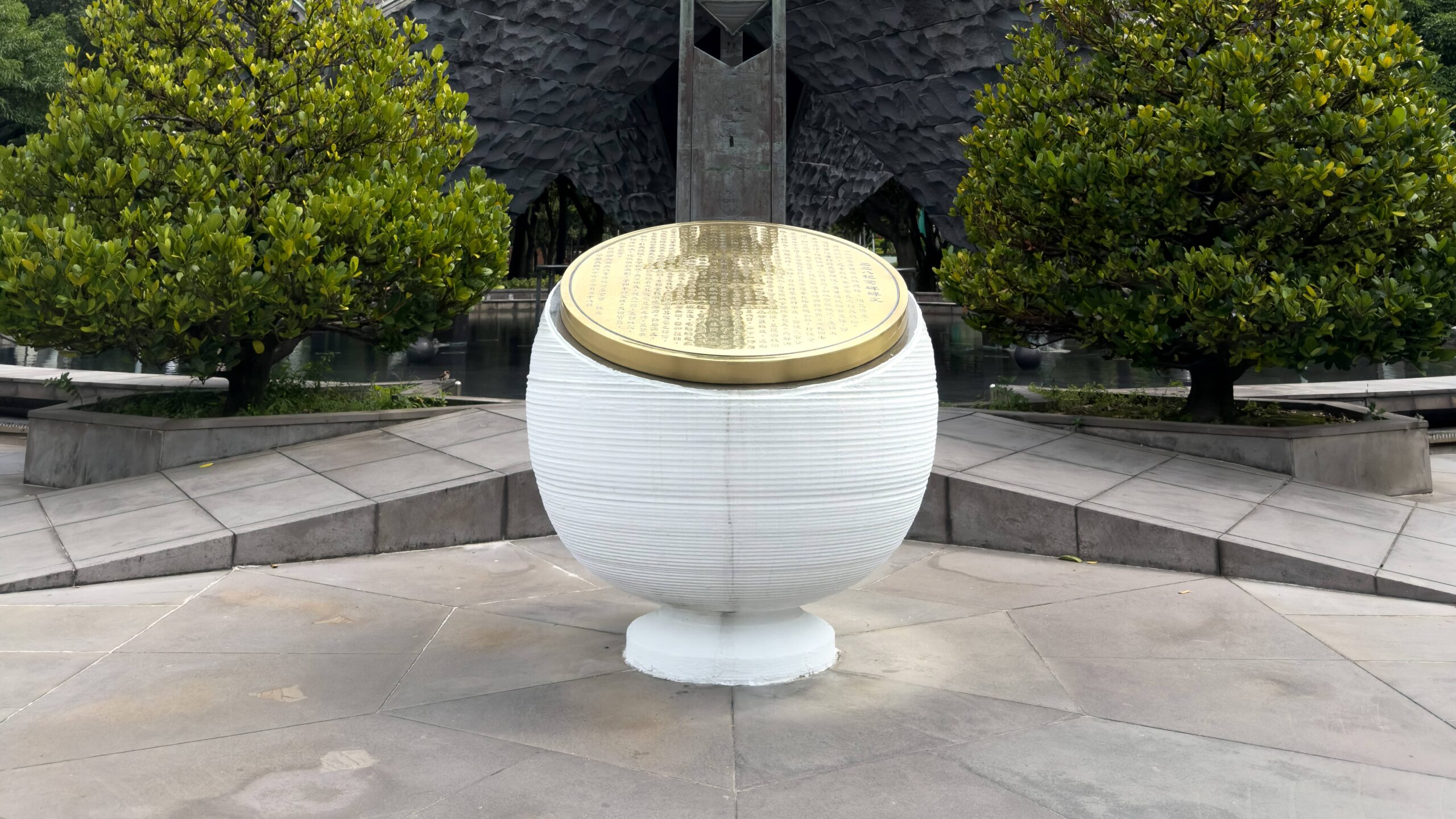
228 Peace Memorial Park
Adjacent to the memorial hall is the 228 Peace Memorial Park, which I visited briefly before taking an extended lunch break.
This peaceful and green space, located in the center of the city, is dedicated to remembering a pivotal and tragic part of Taiwan’s complex history.
It’s quiet and calm; however, if you’re short on time, the park doesn’t stand out much visually, so I’d recommend skipping it unless you’re already nearby.
Ximending
By now, you’re probably thinking I’m a little crazy for squeezing in so much before lunch, but that’s just how I travel since I have an obsession with exploring new things, which makes it easy to take advantage of every hour throughout the day.
Fast forward to lunchtime, I then headed to Ximending, located in the Ximen District and often described as Taipei’s version of Harajuku in Japan.
This fun, youthful district is full of energy, color, and a bit of chaos, which made finding my friends in the crowd a bit of a challenge.
We eventually decided to meet at the famous Rainbow Six, a vibrant alley perfect for anyone chasing the perfect social media photo.
Another tip, if you plan to visit, be prepared to wait your turn, as many other tourists are thinking the same thing as you.
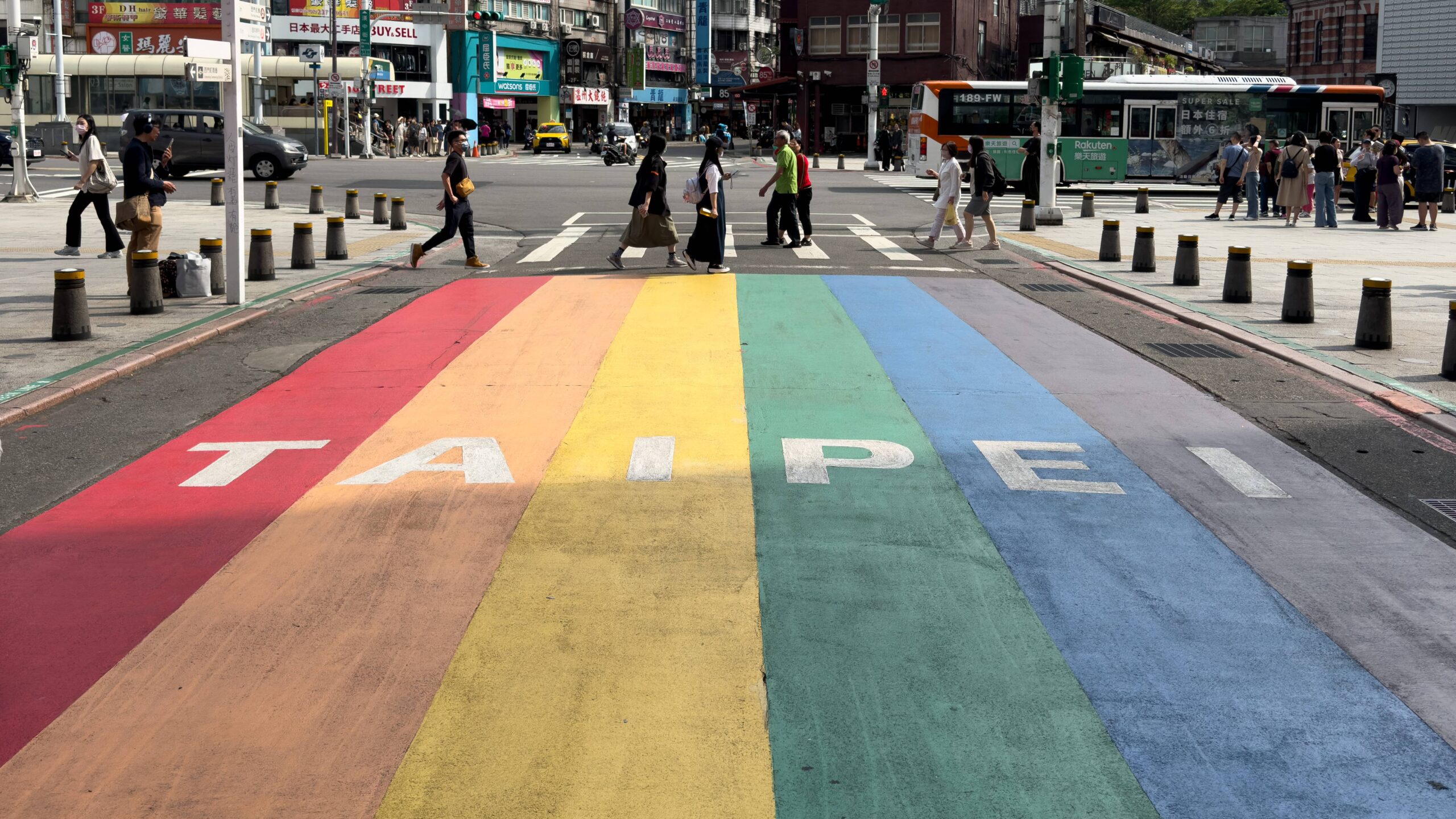
Dihua Street
Once my friends, Jack, a local Taiwanese, and his Japanese wife, Mio, finally arrived, we wandered around for a bit, catching up and browsing souvenir shops.
Somehow, we ended up walking north for about 30 minutes until we reached Dihua Street, one of Taipei’s oldest trading streets.
Dihua Street, located in the Datong District, offered a completely different vibe, as this historic area is well-known for its traditional snacks, herbal medicine shops, and unique tea houses.
The preserved architecture tells stories of old Taipei, so we took a break here while Jack tempted me to try fried squid and stinky tofu, which I politely declined due to a seafood allergy.
Taipei Bridge
An hour or two (and several snacks and boba teas) later, we made our way to the Taipei Bridge, the west side of the Sanchong District.
Honestly, there’s nothing too special about it, unless you’re there to catch the famous Scooter Waterfall, a mesmerizing sight where hundreds of scooters cascade down the slope during rush-hour traffic.
If you’re not into this kind of thing, it’s totally skippable. But if you’re a wannabe travel photographer like me, it’s absolutely worth a visit.
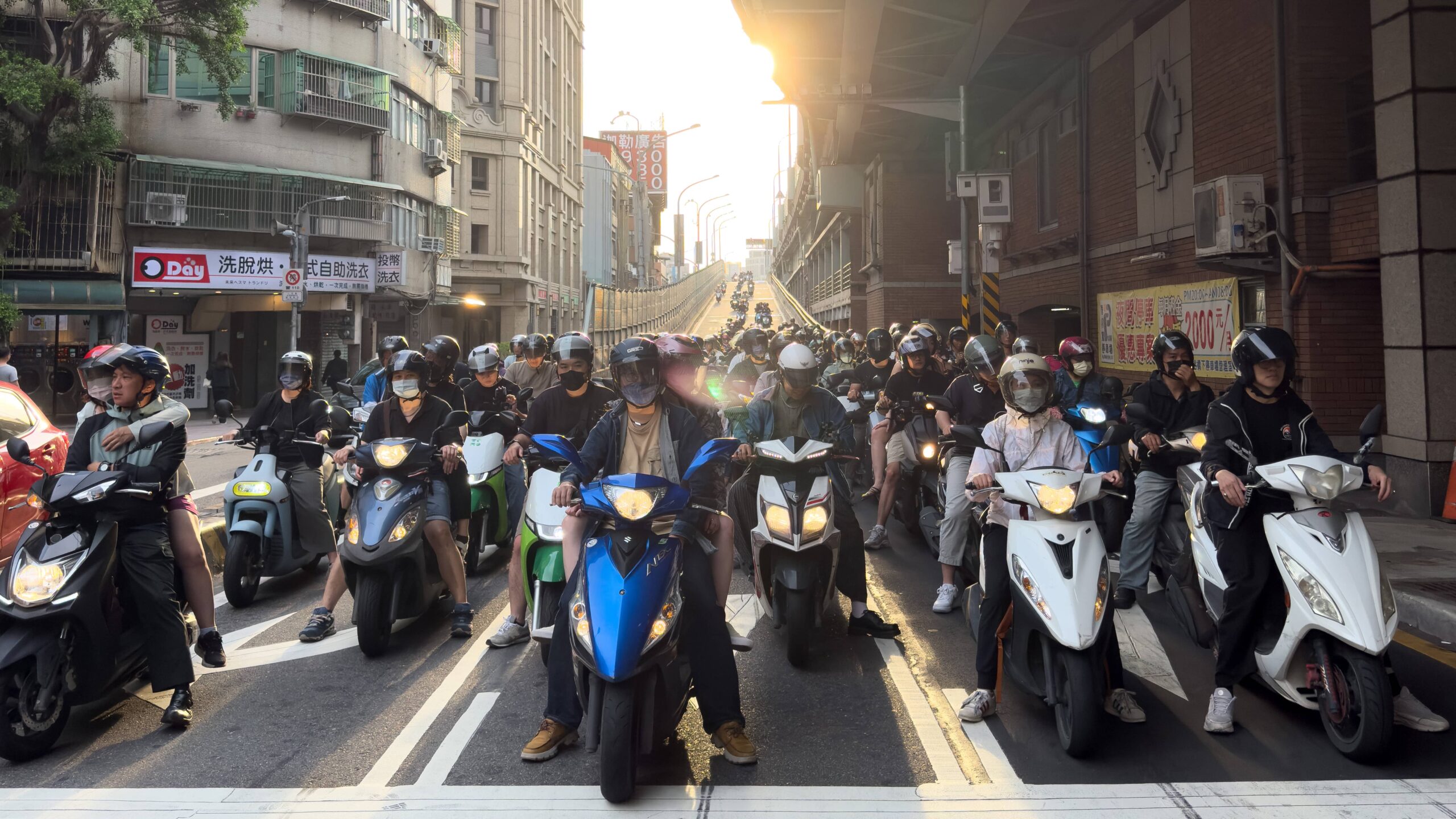
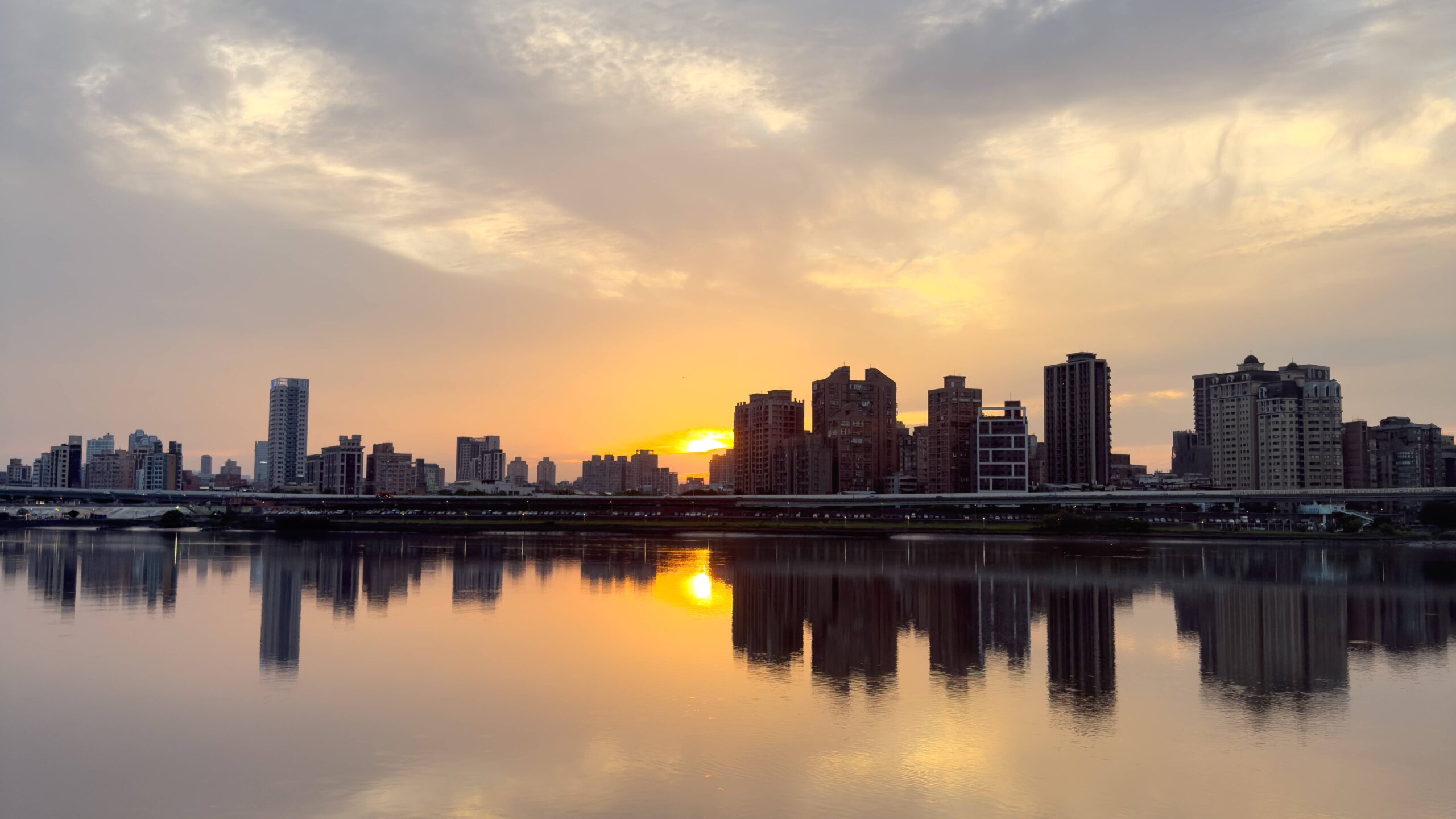
Dadaocheng Wharf Container Market
As sunset approached, we made our way to Dadaocheng Wharf Container Market, a trendy riverside pier and hangout spot, perfect for sipping a craft beer while watching the city wind down.
The cold brew hit the spot as the golden sunlight reflected on the water, setting the scene for our final stop of the day.
Ningxia Night Market
Compared to Raohe, the night market I visited two nights earlier, Ningxia Night Market was a bit more enjoyable, probably because it felt more local, and this time I had someone with me who actually knew what to order.
Ningxia is famous for its oyster omelets, crispy pork buns, and mango shaved ice, which my friends obviously ate while I played it safe (again) with a comforting bowl of beef noodle soup.
If you’re interested in immersing yourself in Taipei’s nightlife, head toward the back of the market to play the various rows of carnival games as, it’s a fun way to cap off the night.

As you can probably guess, I was completely exhausted by this point. After logging nearly 30,000 steps, I half-joked to myself about passing out on the street, but somehow managed one final push.
After dinner, I said goodbye to Jack and Mio, thanking them for showing me around and sharing their insights into Taipei’s culture and history.
From Ningxia, it was about a 20-minute walk back to Taipei Main Station, where I grabbed my suitcase from the coin locker (which at this point cost around $10 USD).
I then caught a taxi to Le Room Hotel Kaifeng, a budget-friendly, hostel-style property known for housing international travelers, and immediately passed out after checking in.
Day 4: Taipei, Taichung & Southern Taiwan
Well, here I was, in the final stretch of my Taipei adventure. The journey wasn’t over just yet, though, as I had plans to head south to Kaohsiung for the final two days of my trip (more on that soon).
After a surprisingly decent six hours of sleep, I packed up my suitcase and got ready to check out of the hotel, but not before grabbing the complimentary breakfast included with my stay.
Nothing fancy, just the usual eggs, bacon, and coffee, but hey, I still consider it a free meal.
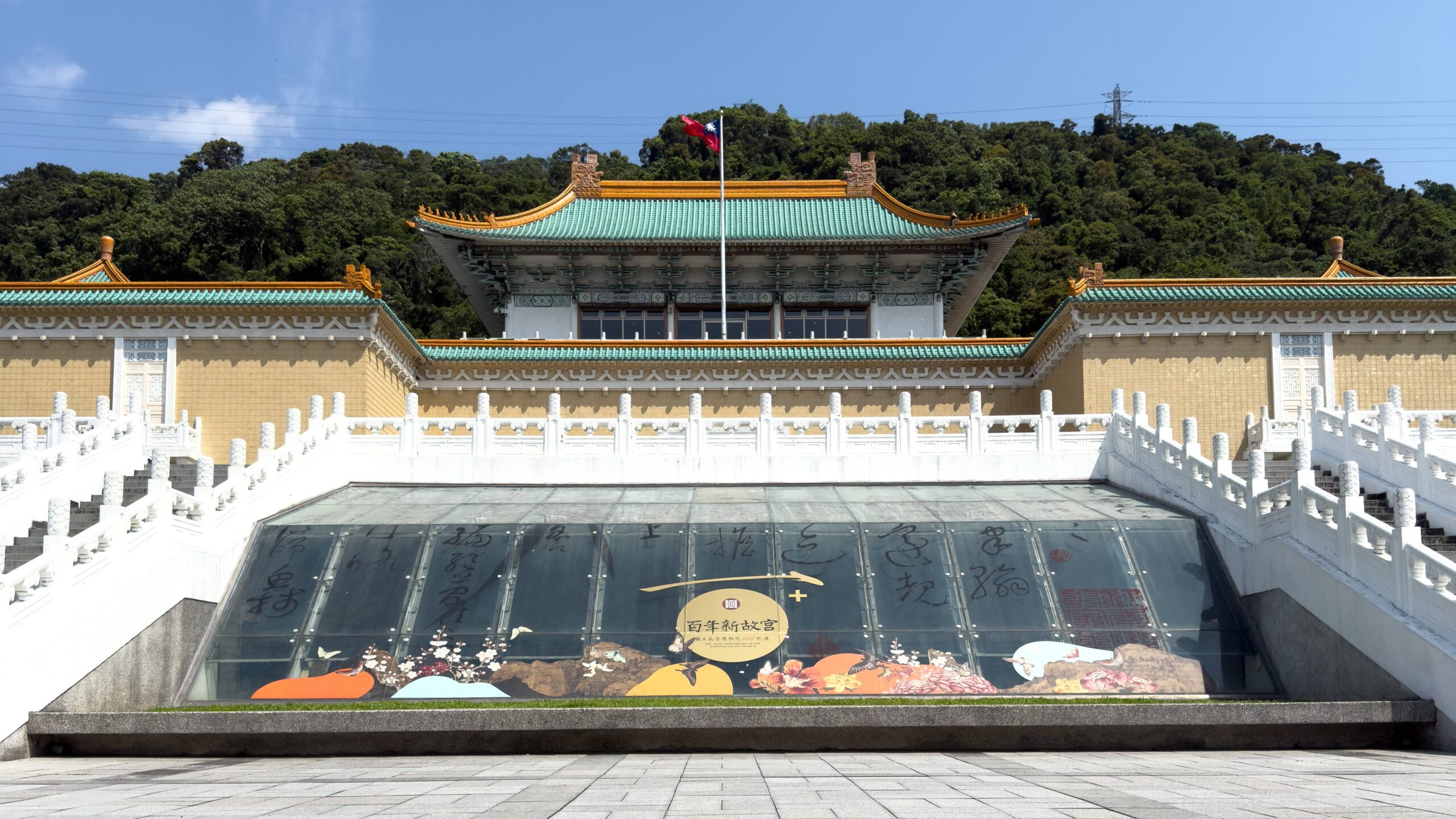
Once I checked out, I made my way back to Taipei Main Station to store my suitcase in (you guessed it) another coin locker. This gave me a few more hours to explore the remaining city before heading south.
As packed as the previous day had been, there were still a couple more places I wanted to cross off my Taipei list.
National Palace Museum
I boarded a bus and headed 45 minutes north to the National Palace Museum, home to one of the world’s largest and most impressive collections of Chinese imperial artifacts.
Located in the heart of the Shilin District, this renowned institution houses over 700,000 relics spanning thousands of years.
Even if you’re not a “museum person” (I’m only halfway there myself), the building and its surrounding grounds are absolutely worth the visit.
National Revolutionary Martyrs’ Shrine
A short ride away, just a 15-minute bus and another 10-minute walk towards the Zhongshan District, is the National Revolutionary Martyrs’ Shrine, a quiet, rarely crowded memorial complex dedicated to the war dead of the Republic of China.
This peaceful, reverent, and large structure is tucked against a mountain backdrop; however, unless you’re there for the changing of the guard ceremony, it doesn’t differ much from the Palace Museum experience.
So, I’d recommend choosing just one of the two to get a meaningful cultural fix without overloading your schedule.
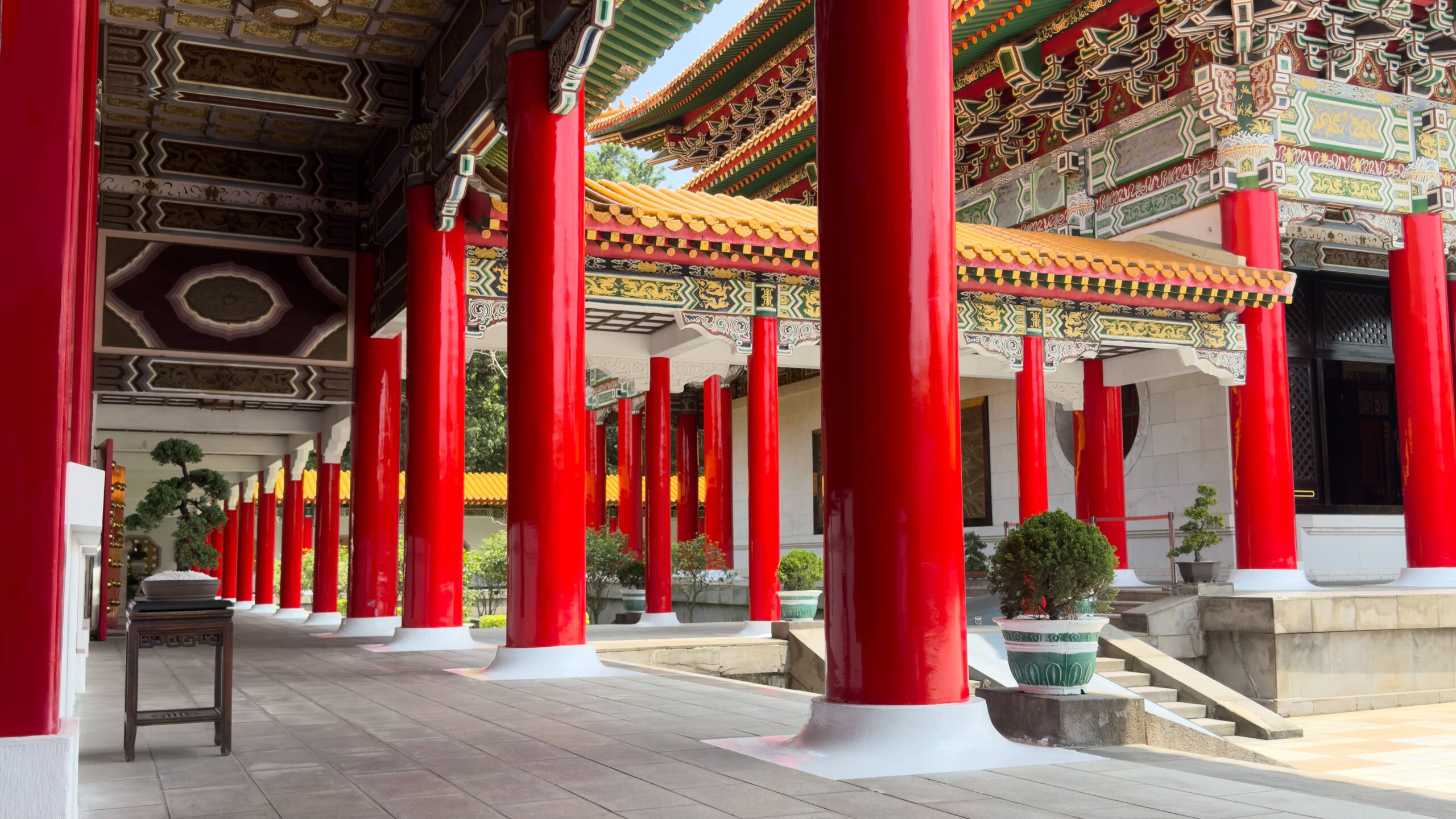

Taiwan High-Speed Rail
With these final stops completed, I officially wrapped up my Taipei itinerary, and just like that, it was time to head south to continue the adventure.
Back at Taipei Main Station, I made my way to the Taiwan High-Speed Rail (THSR) terminal, a fast, efficient, and comfortable bullet train that can easily take you from one side of the country to the other in roughly three hours for about $50 one-way.
If you’re familiar with traveling in Japan, it’s very similar to the Shinkansen experience.
Taichung’s Rainbow Village
Before heading all the way down to Kaohsiung, my final destination in southern Taiwan, I decided to make a quick detour to Taichung, a mid-sized city about halfway down the island.
During this time, I was eager to check out the famous Rainbow Village, a colorful housing project painted by a former soldier to save his neighborhood from demolition, which seemed to be a popular destination (according to other blogs).
The murals were indeed vibrant and charming, with every wall, floor, and corner painted in bold, cheerful patterns. However, I have to admit, I was a bit disappointed by how small it was.

Based on everything I’d read beforehand, I expected something more expansive or immersive, but in reality, you can probably walk through the entire village in under 15 minutes (depending on how many photos you stop to take).
That said, if you’re already in Taichung, it’s still worth a quick visit, but I wouldn’t go out of your way to see it like I did.
Fortunately, since it was still early in the afternoon, I took the opportunity to head to Kaohsiung a bit earlier than planned and make the most of the remaining daylight.
Before I knew it, I was on the next bus back to Taichung Station, where I once again boarded the bullet train south to finish my journey.
Taipei: Closing Thoughts & Key Takeaways
Well, if you’ve made it this far, then I suppose I should give a big thank you. This was my first time writing a serious blog post, and it definitely took some effort to find the right words to share my story.
Before I wrap up, I want to leave you with a few final thoughts and recommendations in case you’re planning a trip to Taipei in the future.
Taipei packs a surprising amount of diversity into a relatively small area, such as ancient temples and futuristic skyscrapers, lively night markets and peaceful mountain trails, historic sites and cutting-edge art spaces.
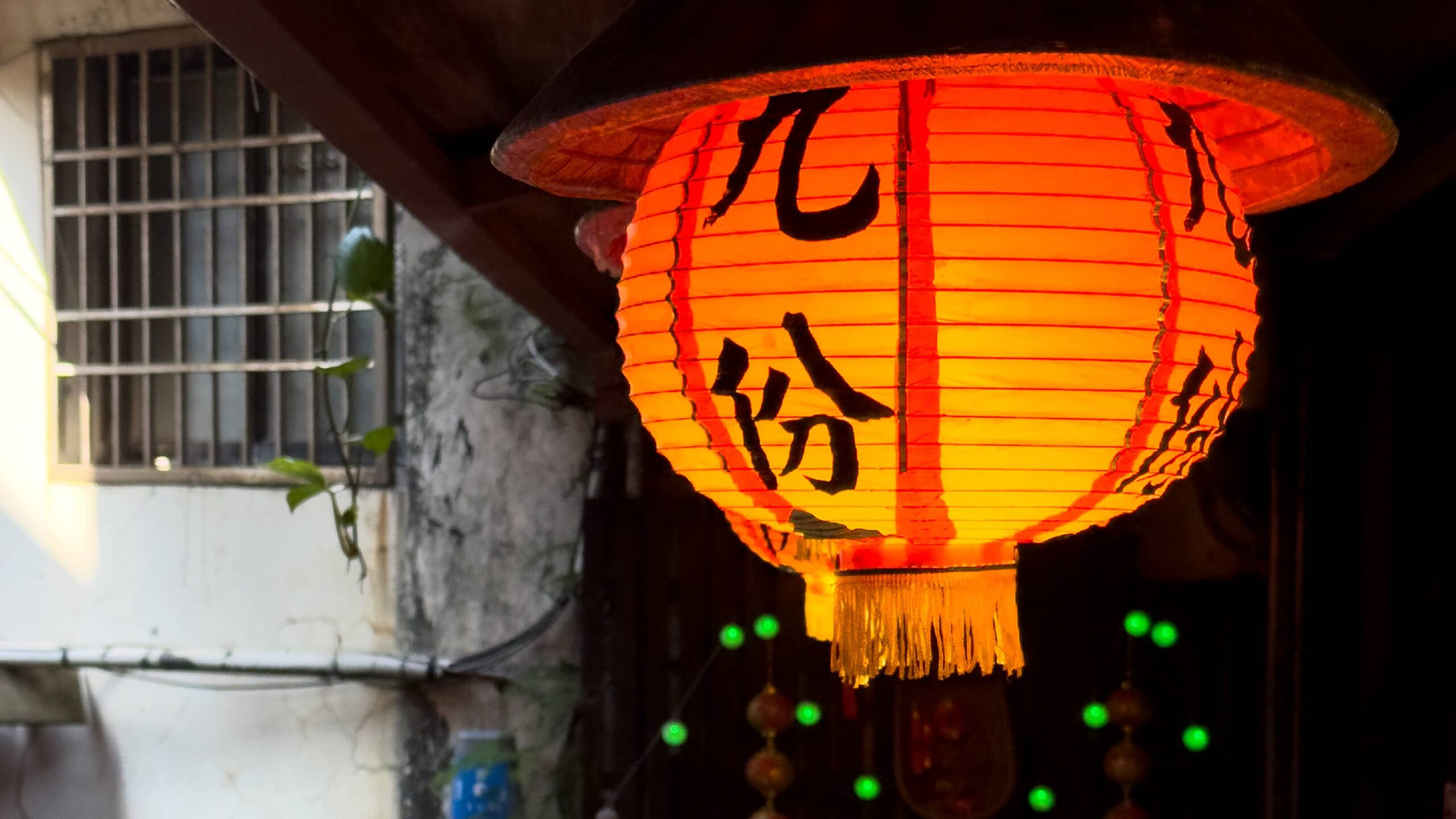
The people are incredibly welcoming, the public transportation is efficient and affordable, and the convenience stores (mainly 7-Eleven) make everything easy.
I found the combination of Chinese heritage, Japanese influence, and a distinct Taiwanese identity to be something truly special. The coexistence of these three cultures was one of the main reasons I wanted to visit Taiwan in the first place.
That said, as someone currently living in Tokyo, I couldn’t help but notice some similarities, especially in the pace of city life, the high standard of service, and the constant balance between modernity and tradition.
Sure, four days isn’t nearly enough time to fully absorb everything Taipei has to offer, but at the same time, I don’t feel an urgent need to rush back just yet.
Next Steps
To sum it up, Taipei is a fantastic city, and I’d absolutely recommend it to anyone looking for a unique travel experience that’s both dynamic and culturally rich. It’s certainly got a lot to offer, especially for Westerners looking to explore Asia in more detail.
If you’re curious about what came next, feel free to check out my Kaohsiung adventure, featuring highlights from my time in southern Taiwan, or browse the edited photos from this trip on my Taiwan page.
Thanks for reading,
William
